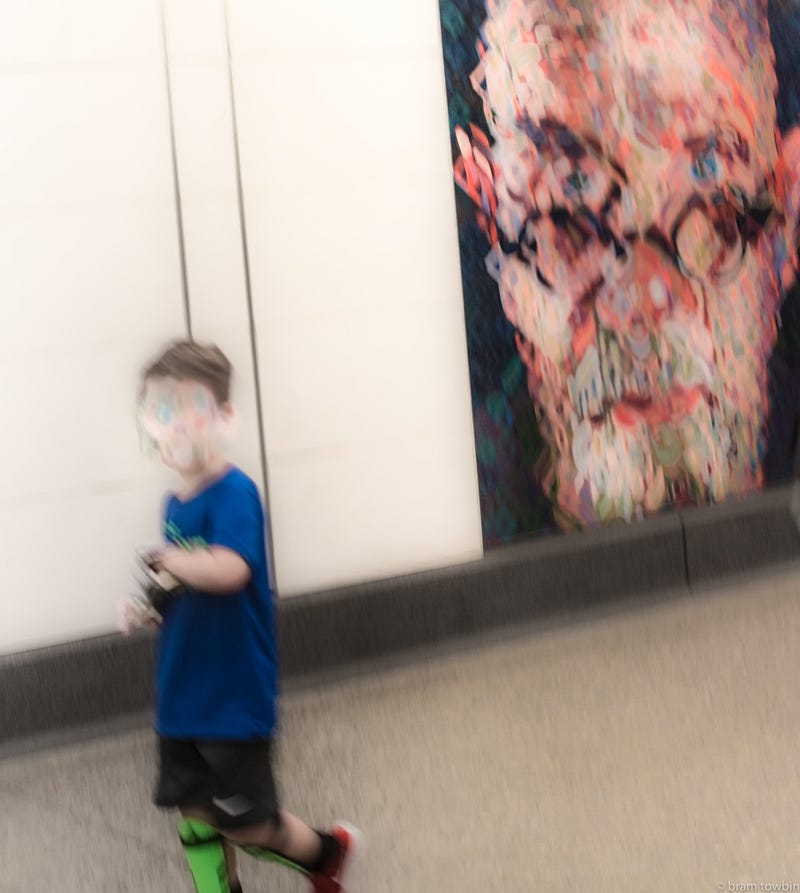Review of the film Hereditary (2018)
Forgetting Our Heritage
“A Report on the Banality of Evil” - Hannah Arendt, subtitle to Eichmann in Jerusalem
Hereditary, Ari Aster’s horror feature, casts a dark spell over reviewers. Many believe this to be a seminal masterpiece. Here are a smattering of accolades: “craft(s) its own scare vocabulary” (Slate), “new horror classic… Oscar calling” (Rolling Stone), “it’s own spin on terror” (The New York Post), “It’s pure emotional terrorism” (the AV Club)….. The last blurb might be true, but not in the way the critic intended. What does it mean when so many knowledgable people are moved by second rate writing, directing and storytelling? Hereditary is over-wrought, over-thought and derivative. It steals and butchers a genuine classic from half a century ago that features an innocent mother who is impregnated by the devil himself. Roman Polanski’s Rosemary’s Baby established this sub category of horror, it is unfortunate Aster has so little to add to this well worn genre.
Hereditary borrows the troupe of hosting the demon but the film, metaphorically, goes to hell in hand-basket. There is nothing in the Aster remake that improved upon Polanski’s work. In fact, just the opposite. Rosemary’s Baby and it’s spawn, The Exorcist & The Omen, gave us clearly delineated actions that made sense in the carefully constructed logic of the film. Hereditary is just a muddle. Rosemary’s husband’s betrayal is brought on by greed and vanity. This dovetails beautifully with the Christian exhortations against such indulgences. This also made the film a cultural touchstone at height of the 60s social chaos. Who can forget the pregnant Rosemary sitting her obstetricians office picking up a copy of Time Magazine entitled “Is God Dead?”. Hereditary sheds no light on the origin of the darkness. Why is the matriarch sacrificing her daughter, granddaughter, son-in-law and grandson to the demon? Her motivations are as opaque as most of the principles. What was the grandmother’s original association with the cult? Why does the husband indulge his wife when she has tried to kill their son? Pouring paint thinner on the boy and trying to light a match would be sign to most humans that it probably wouldn’t be a good idea to leave the two unattended. It would also be a red flag regarding joining the wife in forcing the son to participate in an impromptu seance to revive the dead sister. Did I mention that this young girl was killed in an auto mis-hap caused by the brother? That might have also prompted the father to forbid the wife from creating a miniature doll-house recreation of the event, complete with the daughter’s tiny decapitated head. Daddy seems to reason that Mommy is an artist by profession and therefore has license to torment the son. Incidentally that car tragedy was triggered by another bizarre decision. Why would a mother force a teenage boy to take his socially maladjusted younger sister to unchaperoned party? The plot conceits might be acceptable in a more thoughtfully constructed story. Unfortunately the twists and turns are made to showcase the horror. All the pressure builds for an obligatory feast of carnage during the last 10 minutes, replete with another decapitation. Mother mimics her daughters demise by losing her head by her own hand. This filmmaker felt all the “turn of screw” waiting is justified in a finale of immolation and mutilation. It was his chef d’oeuvres, but in a negative sense. In mature work the gruesome spectacle is an internal part of the story and not a showy bacchanalia of gore. The director Nicolas Roeg proves the point in his seminal horror film, Don’t Look Now. Roeg’s single display of a throat being slashed has infinitely more punch than Aster’s parade of horrors.
There are bright spots amongst the missed opportunities. Toni Collette’s rendering of the mother matches the brilliance of another tortured parent, Shelly Duvall in The Shinning. Alex Wolff, as the son, show an ability to channel emotion with simple gesture and expression. Aster borrows a trick from Joseph Losey’s Accident. In that film the facade of a country house accompanies the soundtrack of a car racing and crashing. The result amplifies the horror. Aster has audio the mother’s discovery of her daughter’s headless body being seen through the despondent dead-pan face of the young son. It is a beautifully rendered grizzly moment, made strong by Wolff’s grim visage of despair, guilt and shame. The sister, Milly Shapiro, is also effective as the embodiment creepiness. She brings to mind a sinister version of the 1970’s oddball child-actor Mason Reese. There is a discordant melding of wholesome innocence and weird deformity. You don’t have to be a child psychologist, priest or physiologist to know that something is wrong, in an unearthly way. The most famous member of the cast, Gabriel Byrne is the least interesting character and performance. One imagines the producers & director saying, “So Gabriel, lets try an American accent”. His response would have been in his natural brogue, “No, I’m just gonna just talk the way I talk”. I’m sure he took the part thinking no one would ever see a film based on the clunky script. Maybe this experience taught him the devil works in mysterious ways. On cannot blame the lack of effort as the character is, metaphorically, a castrated dimwit. What would motivate a talented actor to take the part of an unlikeable foil that allows his family to drift into disaster? Maybe money is the root of all evil.
One wonders if the dark forces are strong or whether the good guys are just too damn dumb. This illustrates the central problem with Hereditary. None of the set-pieces, such as the father, are rooted in the broader narrative. In Polanski’s precursor, all the side characters, the husband, the lady next door, the doctor are central to the cult and its agenda. The cast of Hereditary are primarily walk-ons pushing plot points, rather than furthering the devil’s work. The cadre of demons that appear in the finale, are completely absent from the central narrative with the except of the woman from the grief support group. Once again her role, inspiring the grieving mother to wake her family for an impromptu seance, is crippled by credulity. Perhaps the mother’s miniature dioramas should have come to life to push the mother along her path to madness and suicide. Unfortunately they woodenly reflect the mother’s psychological deterioration. All those oddly terrifying still life models never dynamically inform the story. Yes she recreates the accident, but the art needed to be a character in itself in the manner of the mansion in the Shinning. When you expend that amount of camera time on those little rooms and shrunken manikins, it should dovetail with the main event — i.e. the cult’s plan to raise one of the king’s of the underworld. In order for this to have resonance Aster needs to be more in touch with our present zeitgeist of evil. Who are our devils?
As the old saying goes, “we live in interesting times” and the list of dark forces grows with every news cycle. Even the weather has been cast in the battle of good and evil. Aster’s scenario, anti-Christ in the burbs, is old hat. Our tech titans, the ones that speak of living forever and doing no evil, are the perfect candidates for the modern Mephistopheles. Their forbidden fruit is the promise of a better tomorrow if you, painlessly, hand your every waking (and sleeping) moment. The challenge of the future is to rise above merely being algorithms in the service of commerce. The films Ex Machina and Her are recent features that illustrate the plight of man’s soul in the man vs. machine conundrum. Aster must be reminded, the devil is in the details. It is not enough to invoke the genuine article. It is the ingenuity of evil that it parades as goodness. The job of a director is to give reason for supping with a long spoon. Hereditary shows the specter of evil in our genes. Perhaps it’s really in our screens.

